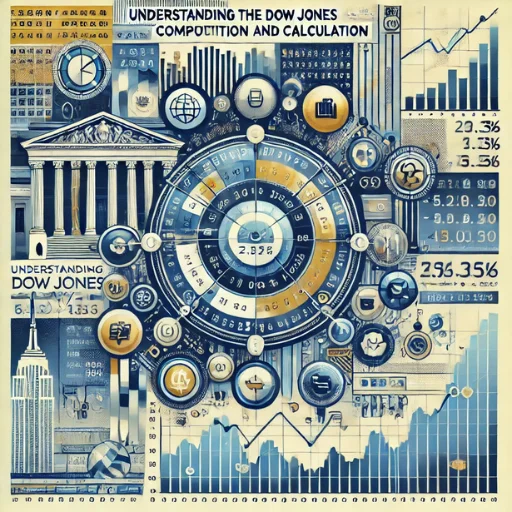Dow Jones FintechZoom: Comprehensive Insights

The Dow Jones Industrial Average (DJIA), commonly referred to as the Dow Jones, is a benchmark stock market index that tracks the performance of 30 prominent publicly traded companies in the United States. As a cornerstone of global financial markets, the Dow Jones offers a snapshot of the broader economic landscape and serves as a critical indicator for investors worldwide. This article provides an in-depth look at the Dow Jones, leveraging insights and data from FintechZoom.
Introduction to the Dow Jones Industrial Average

The Dow Jones Industrial Average is one of the oldest and most recognized stock market indices, created in 1896 by Charles Dow and Edward Jones. Unlike indices that include hundreds or thousands of companies, the DJIA focuses on 30 blue-chip stocks, representing a diverse range of industries such as technology, healthcare, financial services, and consumer goods.
FintechZoom, a leading financial news and analysis platform, offers real-time updates and insights into the Dow Jones, making it an invaluable resource for traders, analysts, and investors.
Understanding the Dow Jones: Composition and Calculation

Composition of the DJIA
The 30 companies included in the Dow Jones are carefully selected to reflect the overall health of the U.S. economy. These companies are leaders in their respective sectors, and the list is periodically reviewed to ensure it remains representative of current market conditions.
Calculation Methodology
Unlike market-cap-weighted indices such as the S&P 500, the DJIA is a price-weighted index. This means that companies with higher stock prices have a greater influence on the index’s value, regardless of their market capitalization. The index’s value is calculated by adding the stock prices of all 30 companies and dividing the total by a divisor, which is adjusted for stock splits, dividends, and other corporate actions.
Dow Jones Performance Trends

Historical Milestones
- Great Depression Era: The Dow experienced significant volatility during the Great Depression, highlighting the index’s sensitivity to economic downturns.
- 1987 Black Monday: The Dow suffered its largest one-day percentage drop, losing 22.6% of its value.
- 2008 Financial Crisis: The index saw a sharp decline, reflecting the global economic turmoil.
- COVID-19 Pandemic: The Dow witnessed unprecedented swings in 2020, underscoring the impact of global health crises on financial markets.
Recent Trends
According to FintechZoom, the Dow Jones has shown remarkable resilience in recent years, recovering from pandemic-induced lows and reaching record highs driven by fiscal stimulus, robust corporate earnings, and economic reopening.
How to Analyze the Dow Jones on FintechZoom?

Key Features
Real-Time Index Data
FintechZoom provides real-time updates on the Dow Jones, allowing users to track intraday movements and historical performance.
Sector Analysis
The platform breaks down the index by sector, helping users understand which industries are driving the Dow’s performance.
News and Market Insights
FintechZoom aggregates news and expert opinions, offering a comprehensive view of factors influencing the Dow Jones, from economic reports to geopolitical events.
Steps to Utilize FintechZoom for Dow Analysis
- Access the Dow Jones Section: Navigate to FintechZoom’s dedicated DJIA page.
- Customize Timeframes: Analyze data over specific periods, such as daily, weekly, or yearly trends.
- Leverage Tools: Use charts, technical indicators, and sector breakdowns for in-depth analysis.
FAQs About the Dow Jones
1. What is the current value of the Dow Jones?
The current value of the Dow Jones fluctuates based on market trading. Visit FintechZoom for real-time updates.
2. Why is the Dow Jones important?
The DJIA is a key economic indicator, reflecting the performance of major U.S. companies and offering insights into the health of the stock market and economy.
3. How is the Dow Jones different from the S&P 500?
While the Dow Jones includes 30 price-weighted stocks, the S&P 500 tracks 500 market-cap-weighted stocks, providing broader market coverage.
4. Can I invest directly in the Dow Jones?
Investors cannot buy the index directly but can invest in ETFs such as the SPDR Dow Jones Industrial Average ETF (DIA) that track its performance.
5. What factors influence the Dow Jones?
Economic data, corporate earnings, interest rates, and geopolitical events are primary factors affecting the Dow’s performance.
Conclusion
The Dow Jones Industrial Average remains a vital tool for understanding market trends and economic health. As a price-weighted index of 30 leading companies, it provides investors with a focused view of the U.S. stock market. FintechZoom serves as a powerful platform for tracking and analyzing the Dow Jones, offering real-time data, sector insights, and expert opinions.
Whether you are a seasoned investor or new to the market, leveraging tools like FintechZoom to stay informed about the Dow Jones can help you make smarter investment decisions. As markets continue to evolve, the Dow will undoubtedly remain a central figure in global finance.






